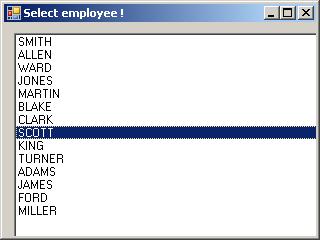In Oracle Universal Installer and OPatch User’s Guide it is documented that The first Oracle home is named the “DEFAULT_HOME” and registers itself in the Windows NT Registry.
Remember, NT means New Technology 🙂
There is apparently a Home Selector that is a part of the installation software, maybe something like D:\oracle\product\11.2.0\client_1\bin\selecthome.bat. Sometimes. Not sure
But there is no DEFAULT HOME in the registry.
PS C:\> gci HKLM:\SOFTWARE\ORACLE
Hive: HKEY_LOCAL_MACHINE\SOFTWARE\ORACLE
Name Property
---- --------
KEY_agent12c1 ORACLE_HOME : D:/oracle\core\12.1.0.1.0
ORACLE_HOME_NAME : agent12c1
ORACLE_GROUP_NAME : Oracle - agent12c1
NLS_LANG : AMERICAN_AMERICA.WE8MSWIN1252
KEY_oracle_sysman_db_12_1_0_2_ ORACLE_HOME : D:\oracle\plugins\oracle.sysman.db.discovery.plugin_12.1.0.2.0
0_discovery_Home0 ORACLE_HOME_NAME : oracle_sysman_db_12_1_0_2_0_discovery_Home0
ORACLE_GROUP_NAME : Oracle - oracle_sysman_db_12_1_0_2_0_discovery_Home0
KEY_oracle_sysman_emas_12_1_0_ ORACLE_HOME : D:\oracle\plugins\oracle.sysman.emas.discovery.plugin_12.1.0.2.0
2_0_discovery_Home0 ORACLE_HOME_NAME : oracle_sysman_emas_12_1_0_2_0_discovery_Home0
ORACLE_GROUP_NAME : Oracle - oracle_sysman_emas_12_1_0_2_0_discovery_Home0
KEY_oracle_sysman_oh_12_1_0_1_ ORACLE_HOME : D:\oracle\plugins\oracle.sysman.oh.agent.plugin_12.1.0.1.0
0_agent_Home0 ORACLE_HOME_NAME : oracle_sysman_oh_12_1_0_1_0_agent_Home0
ORACLE_GROUP_NAME : Oracle - oracle_sysman_oh_12_1_0_1_0_agent_Home0
KEY_oracle_sysman_oh_12_1_0_1_ ORACLE_HOME : D:\oracle\plugins\oracle.sysman.oh.discovery.plugin_12.1.0.1.0
0_discovery_Home0 ORACLE_HOME_NAME : oracle_sysman_oh_12_1_0_1_0_discovery_Home0
ORACLE_GROUP_NAME : Oracle - oracle_sysman_oh_12_1_0_1_0_discovery_Home0
KEY_OraClient11g_home1 ORACLE_HOME : D:\oracle\product\11.2.0\client_1
ORACLE_HOME_NAME : OraClient11g_home1
ORACLE_GROUP_NAME : Oracle - OraClient11g_home1
ORACLE_BUNDLE_NAME : Enterprise
NLS_LANG : AMERICAN_AMERICA.WE8MSWIN1252
OLEDB : D:\oracle\product\11.2.0\client_1\oledb\mesg
ORACLE_HOME_KEY : SOFTWARE\ORACLE\KEY_OraClient11g_home1
MSHELP_TOOLS : D:\oracle\product\11.2.0\client_1\MSHELP
SQLPATH : D:\oracle\product\11.2.0\client_1\dbs
KEY_OraGtw11g_home1 ORACLE_HOME : D:\oracle\product\11.2.0\tg_1
ORACLE_HOME_NAME : OraGtw11g_home1
ORACLE_GROUP_NAME : Oracle - OraGtw11g_home1
NLS_LANG : AMERICAN_AMERICA.WE8MSWIN1252
ORACLE_BUNDLE_NAME : Enterprise
MSHELP_TOOLS : D:\oracle\product\11.2.0\tg_1\MSHELP
SQLPATH : D:\oracle\product\11.2.0\tg_1\dbs
ORACLE_HOME_KEY : SOFTWARE\ORACLE\KEY_OraGtw11g_home1
KEY_sbin12c1 ORACLE_HOME : D:\oracle\sbin
ORACLE_HOME_NAME : sbin12c1
ORACLE_GROUP_NAME : Oracle - sbin12c1
ODP.NET
remexecservicectr remaining_time : 120000
SYSMAN
How do I set my Oracle Home?
Actually if you enter a command like “lsnrctl start”, the OS will search in the PATH for lsnrctl and determines the Oracle Home name accordingly.
Therefore, the only thing you must do to change your default Oracle Home is to set the PATH environment variable. Only then your LSNRCTL START will find the right binary and right parameter file to start your listener.
